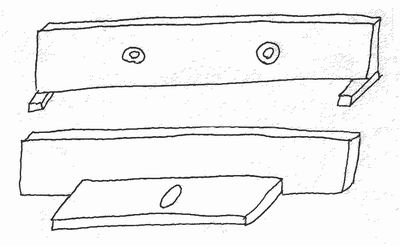Question
What are the horsepower requirements for a 2 head widebelt sander processing solid wood panels and solid wood doors? There seems to be the widest variation on machines offered. For a 43 inch wide belt, I have found everything from a single 20 HP motor powering two heads to two motors with 36 and 24 respectively. The machine I like is being offered with 20 and 15 respectively, and now I wonder if that is enough.
Forum Responses
(Solid Wood Machining Forum)
From contributor L:
If you are a 2 or 3 man shop, what you have picked out will be fine. If you are a large company with lots of uses/users for the widebelt, you would be good to get as much HP as you can. The more the better, especially if you plan on using it to take a good amount off per pass.
My point is, what is the use of a two head machine if you end up doing multi-passes all the time? Essentially you are wasting the second belt and may as well elevate it until you have made the bulk of your passes on the coarser belt to get within range. I want enough power to remove minor tear out from solid wood left by the planer and to flush solid wood panels and 5 piece doors.
I remember hearing a formula years ago that stated 1 HP for every 2 inches. That means the machine I am looking at is slightly underpowered, but the other one is well over the required HP. I consider the machine I have chosen to be more robust with a larger contact drum - 190mm versus 140. So the fact that the lighter machine is offering more power is a bit confusing.
The reason the HP affects the amount of people who can use it is simple. More HP will allow you to use the machine quicker. You can run the conveyor at a faster speed and take off more per pass. This usually meant that if you had to do a front and back pass it would take two passes. One for each side. Then the machine would be open for the next person to use. If you had to do 4 passes that person would have to wait longer, slowing production down. Like I said, if you are a smaller shop it doesn't make too much of a difference. But if you have a crew of 10 or 20 it can make a world of difference.
If you're sanding wood blanks, panels off the planer, doors, etc., then 20/15 hp is fine at .3mm per pass.
Our machine has a solid steel (no rubber) first head which is a double edged sword because if you come in too hot, you will burn up the belts like there's no tomorrow, but the accuracy of a solid steel initial contact roller is amazingly superior to rubber heads and you don't have to spend thousands on a new rubber head when bad things happen.
I finally got smart (after 9 years of burning belts) and bought a quality digital caliper which stays at the machine so every run can be calibrated perfectly to the material instead of relying on the machine's calibrating unit, which has eliminated burning belts.
We also found that the 3m purple heavyweight belts work the best (we have tried everyone's), but they cost 100 bucks plus and you have to buy 5 at a time for each grit you use.
Rubber contact drums are easier on belts, so you can run the cheapies as far as belts go, but you sacrifice absolute flatness in time.
